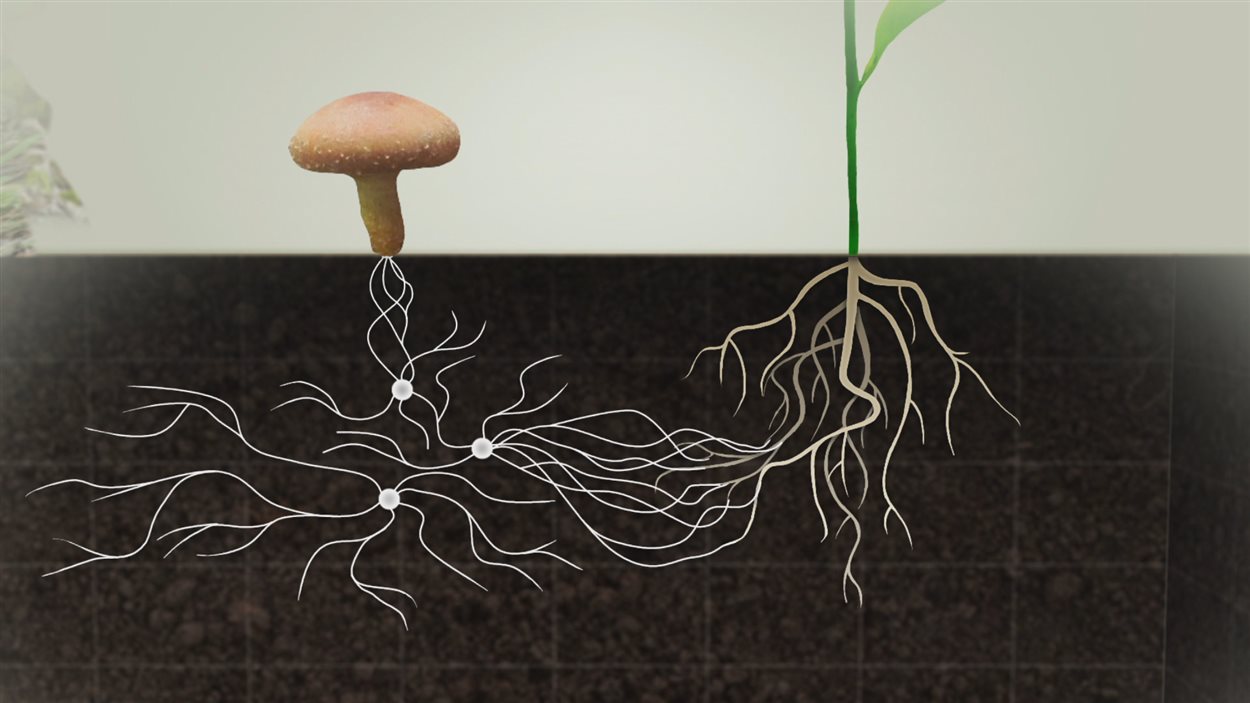The mycelium, i.e. the fine roots of the fungi open up huge areas of soil and extend over several kilometers, depending on the type of fungus. Through this large fungal network in the soil, they absorb significantly more nutrients than a tree.

Contents
- 1 Does a fungus have roots?
- 2 What is a fungal spore?
- 3 How does mycorrhiza work?
- 4 What do fungi produce?
- 5 Why is a fungus not a plant?
- 6 What is a fungus simply explained?
- 7 How to kill fungal spores?
- 8 What is the difference between bacteria spores and fungus spores?
- 9 Where are the spores in fungi?
- 10 What are the properties of mycorrhizal fungi benefit the plant?
- 11 What is mycorrhizal symbiosis?
- 12 What plants need mycorrhiza?
- 13 What is the importance of fungi for humans?
- 14 What does a fungus need to live?
- 15 What are the benefits of fungi?
- 16 Author
Does a fungus have roots?
But the assignment to the realm of plants is not quite correct, because they have no real roots, no leaves and even more crucial: fungi have no leaf green(chlorophyll). So they are not plants, they are not animals, they are not bacteria, but they form the classified realm of fungi.
What is a fungal spore?
Fungi reproduce by means of spores, which, like pollen or the seed plants, each have only one set of chromosomes in their nucleus. In moist soil, they germinate and form tiny rootlets known as hyphae (primary mycelium).
How does mycorrhiza work?
Mycorrhiza – fungi are fungi that connect underground with the roots of plants and form a symbiotic community with them, a so-called symbiosis, which brings many benefits for both the fungi, but especially for the plants.
What do fungi produce?
Unlike plants, fungi do not feed on solar energy or produce oxygen. They need organic food and exhale CO2. Like plants, they form a structure similar to roots, the mycelium. It is composed of very long, thin hyphae.
Why is a fungus not a plant?
Fungi are eukaryotes and form their own kingdom, just like plants, animals or bacteria. Fungi can be both multicellular and unicellular, and some of them are therefore counted among microorganisms. Unlike plants, fungi cannot photosynthesize and must feed heterotrophically.
What is a fungus simply explained?
Fungi are living organisms. They consist of single cells with a nucleus. In biology, they form a separate kingdom from animals and plants. They are more similar to plants because they cannot move by themselves.
How to kill fungal spores?
Be careful especially with fungi that have already nested in towels or shoes. This is how you can kill the fungal spores for good: wash towels hot, change shoes frequently and air them out well. If that’s not enough: put the shoes in a plastic bag in the freezer for three days, of course.
What is the difference between bacteria spores and fungus spores?
Unlike bacteria spores are not permanent forms, so fungus spores are sensitive to heat. Nevertheless, they can remain germinable for centuries. Fungal spores can be infectious and can cause allergies and also severe lung disease after inhalation.
Where are the spores in fungi?
In many fungi, the spores are formed in special fruiting layers of the fruiting bodies, the hymenia. In cap fungi, the fruiting layer is under the cap, where it covers the surfaces of the ledges, lamellae or tubes.
What are the properties of mycorrhizal fungi benefit the plant?
Mycorrhizal fungi have a much greater ability to dissolve minerals and water from the soil compared to the plant. Often the water, nitrogen and phosphate supply of the “infected” plants is improved.
What is mycorrhizal symbiosis?
Mycorrhiza is the community of soil fungi that live in symbiosis with plant roots. The fungus colonizes the plant’s fine root system, supplying the plant with nutrients such as phosphorus and nitrogen and making water more readily available.
What plants need mycorrhiza?
The mycorrhiza exists only in plants of the Ericaea family. Rhododendrons, azaleas, blueberries, calluna and erica are the partners of these fungi.
What is the importance of fungi for humans?
Fungi and their importance for the natural balance
Together with bacteria, fungi form the decomposer organisms (destructors) in the material cycle of our ecosystems. They decompose, for example, wood, dried leaves, fruits, but also horn and fats.
Fungi have another key role as symbiotic partners.
What does a fungus need to live?
All fungi are plants without chlorophyll. So they cannot photosynthesize, so must get their organic nutrients from other living things. Way of life: As parasites on living plants e.g. on tree roots, on tree trunks or on the skin of animals/humans (=skin fungi).
What are the benefits of fungi?
Fungi fulfill important functions in an ecosystem like the forest. They decompose dead organic material such as wood, leaves or needle litter and thus keep the nutrient cycle going.

